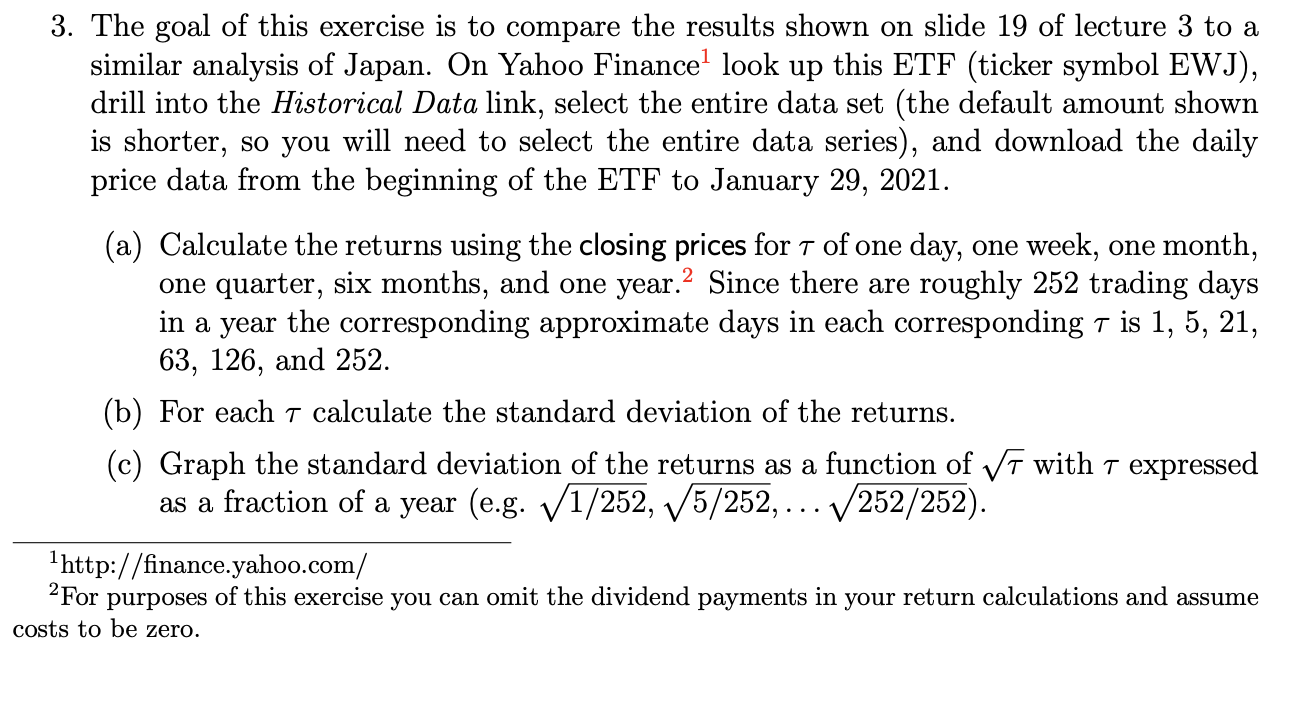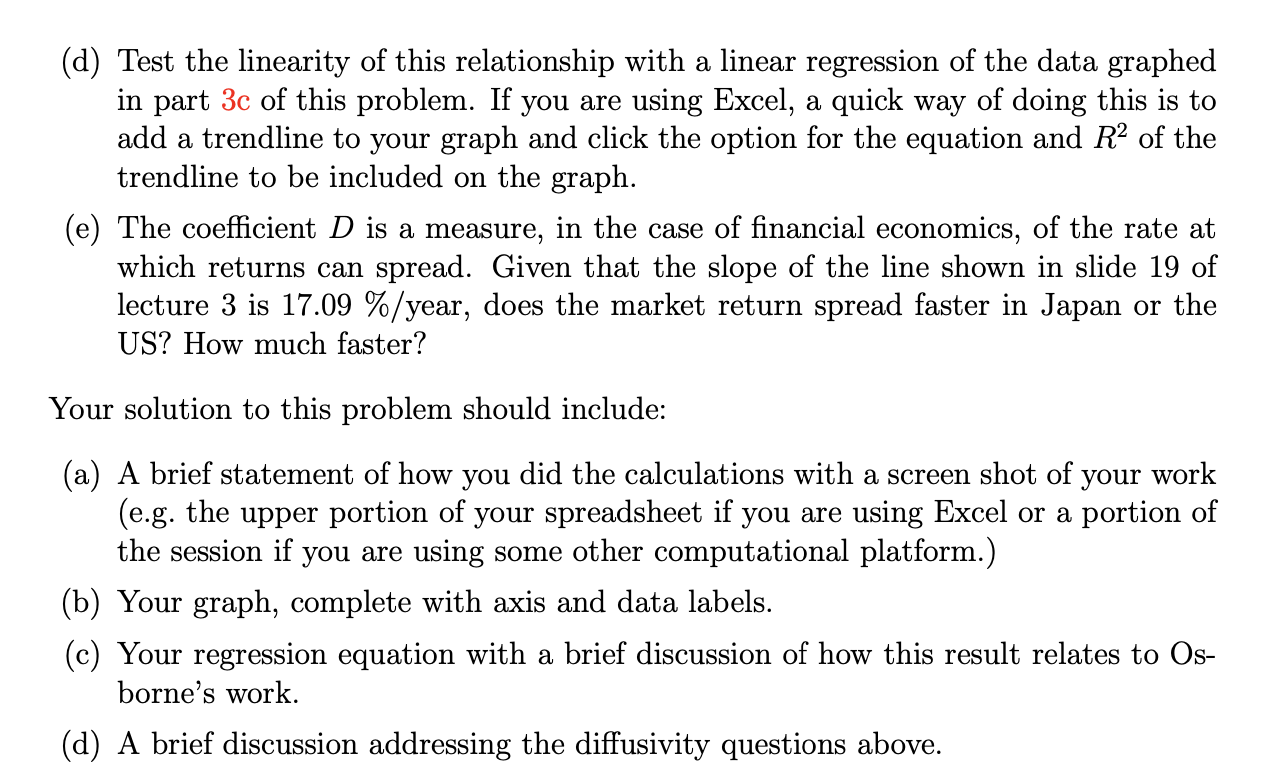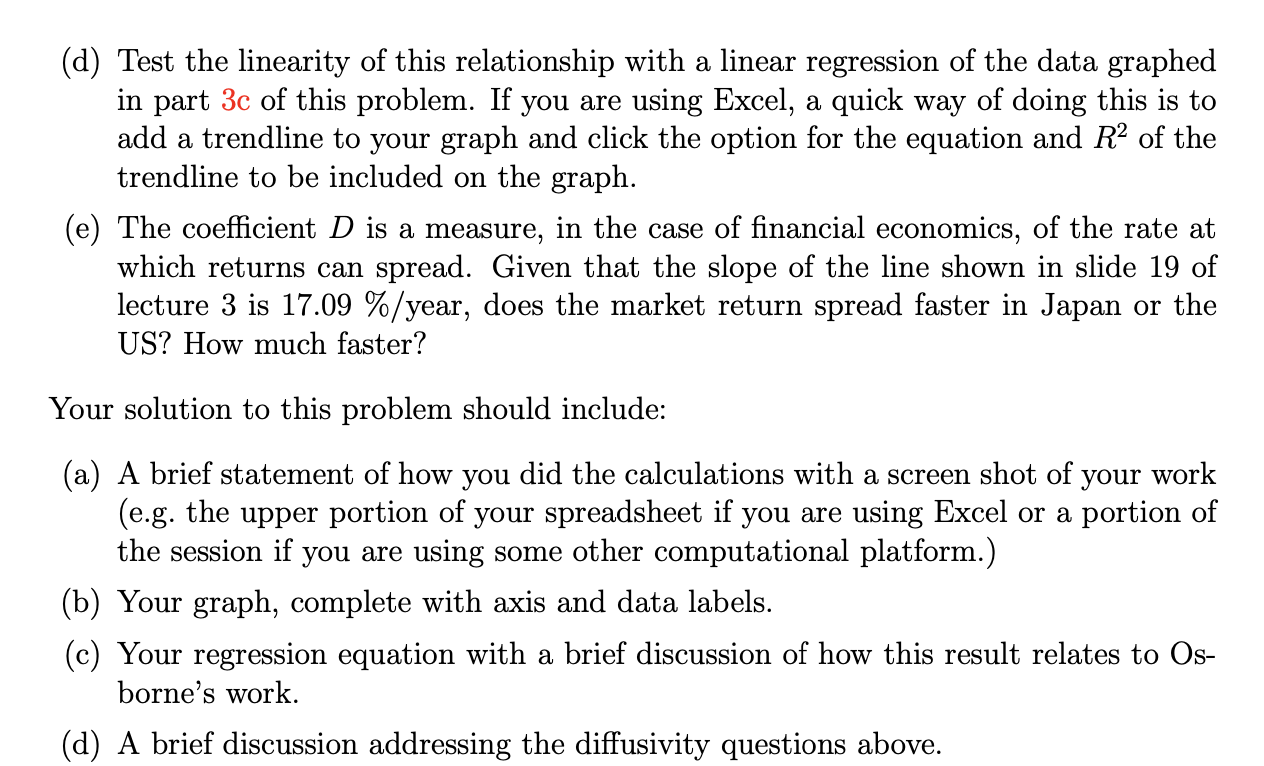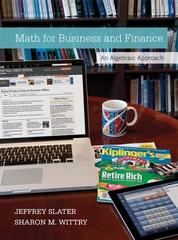

please answer the following problem!!!
3. The goal of this exercise is to compare the results shown on slide 19 of lecture 3 to a similar analysis of Japan. On Yahoo Finance1 look up this ETF (ticker symbol EWJ), drill into the Historical Data link, select the entire data set (the default amount shown is shorter, so you will need to select the entire data series), and download the daily price data from the beginning of the ETF to January 29, 2021. (a) Calculate the returns using the closing prices for T of one day, one week, one month, one quarter, six months, and one year.2 Since there are roughly 252 trading days in a year the corresponding approximate days in each corresponding 7' is 1, 5, 21, 63, 126, and 252. (b) For each 7 calculate the standard deviation of the returns. (c) Graph the standard deviation of the returns as a function of W7 with T expressed as a fraction of a year (e.g. 1/252, 5/252, . . . \"252/252). 1http: / ance.yahoo.com/ 2For purposes of this exercise you can omit the dividend payments in your return calculations and assume costs to be zero. (d) Test the linearity of this relationship with a linear regression of the data graphed in part 30 of this problem. If you are using Excel, a quick way of doing this is to add a trendline to your graph and click the option for the equation and R2 of the trendline to be included on the graph. (e) The coefcient D is a measure, in the case of nancial economics, of the rate at which returns can spread. Given that the slope of the line shown in slide 19 of lecture 3 is 17.09 %/year, does the market return spread faster in Japan or the US? How much faster? Your solution to this problem should include: (a) A brief statement of how you did the calculations with a screen shot of your work (eg. the upper portion of your spreadsheet if you are using Excel or a portion of the session if you are using some other computational platform.) (b) Your graph, complete with axis and data labels. (c) Your regression equation with a brief discussion of how this result relates to Os borne's work. (d) A brief discussion addressing the diffusivity questions above










